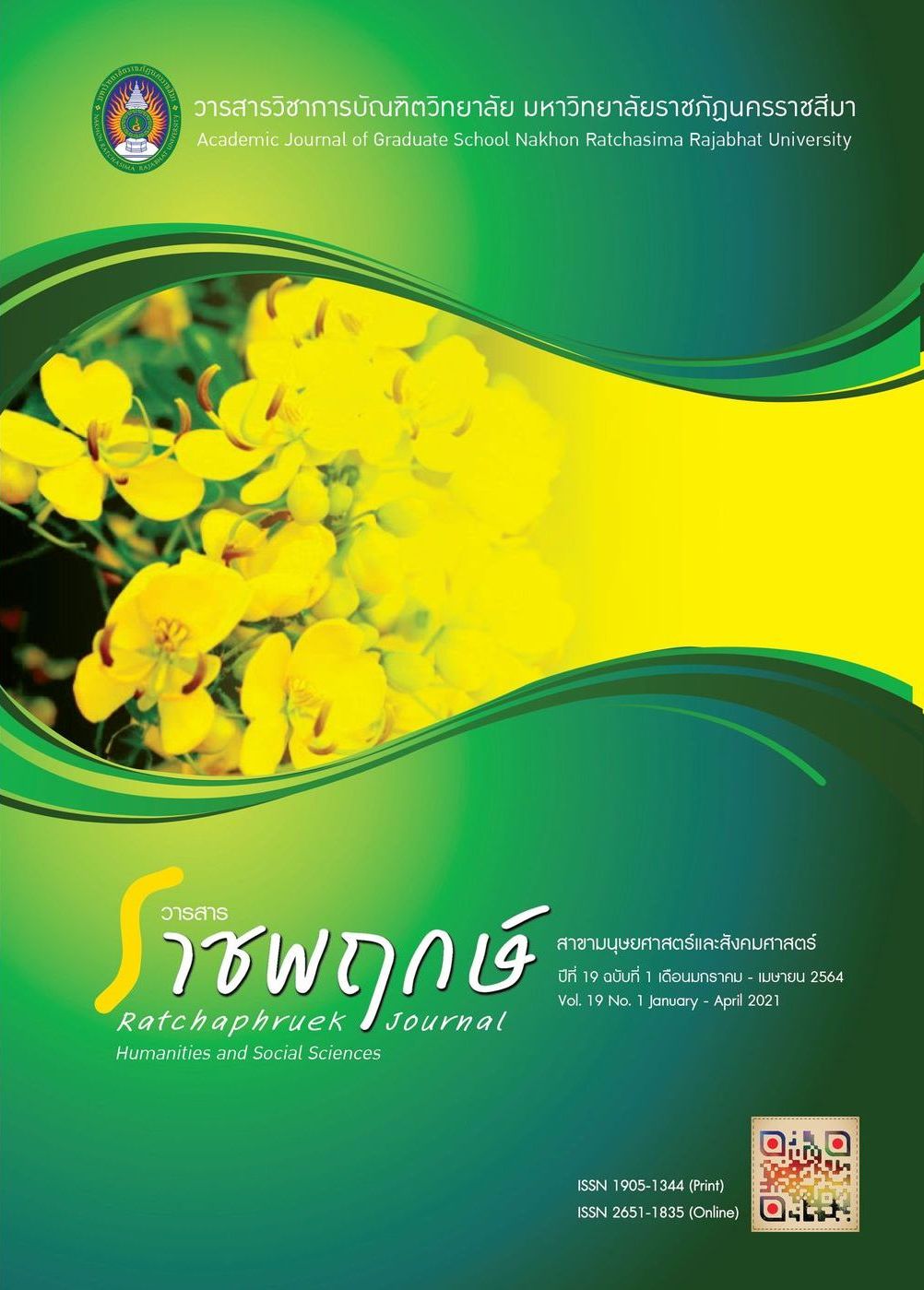The Effects of Inquiry Learning Management Combining with POE Technique Entitled of “Motion and Energy” Toward Learning Achievement and Attitude in Science Subject of Mathayom Suksa III Students at Education Expansion Schools in Sawankhalok District, Sukhothai Province
Main Article Content
Abstract
The research was the study the students’ learning achievement and scientific toward science subject using inquiry learning management with POE technique. The purposes of this research were: (1) To compare students’ learning achievements before and after learning; (2) To compare post-learning achievement scores
with the 70 percent score criterion; (3) To compare attitudes towards science subject before and after learning; and (4) To study relative gain score of learning achievement and attitude towards science subject. Sample consisted of 7 Mathayom Suksa III students at Ban Wangreaschool, an education expansion school in
Sawankhalok district, Sukhothai province during the second semester of the 2019 academic year, obtained by cluster random sampling. The employed research instruments were learning management plans, a science learning achievement test, and a scale to assess attitude towards science. Statistics employed for data
analysis were the percentage, mean, standard deviation, relative gainscore, and sign test.
The research findings revealed that (1) the students’ post-learning achievement were significantly higher than their pre-learning counterpart achievements at the .05 level; (2) the students’ post-learning achievement were significantly higher than the 70 percent score criterion at the .05 level; (3) the students’ post-learning attitude towards science was significantly higher than pre-learning counterpart attitudes at the .05 level; and (4) the relative gain score of students’ learning achievements was at high level and the relative gain score of attitudes towards science was at middle-high level.
Article Details
References
2. ชยพัทธ์ ศรีกรด. (2558). ผลการจัดการเรียนรู้แบบสืบเสาะหาความรู้แบบวัฏจักรการเรียนรู้ 5 ขั้น (5E) ร่วมกับเทคนิคแผนผังทางปัญญา วิชาชีววิทยา เรื่อง ระบบประสาทและอวัยวะรับความรู้สึก สำหรับนักเรียนระดับชั้นมัธยมศึกษาปีที่ 5. (ปริญญาการศึกษามหาบัณฑิต, มหาวิทยาลัยบูรพา).
3. ดวงเดือน พินสุวรรณ์. (2558). "การพัฒนาครูวิทยาศาสตร์" ใน ประมวลสาระชุดวิชา การสัมมนาหลักสูตรและการเรียนการสอนวิทยาศาสตร์. หน่วยที่ 10 (น. 1-61). นนทบุรี: มหาวิทยาลัยสุโขทัยธรรมาธิราช.
4. ทิศนา แขมมณี. (2556). ศาสตร์การสอน: องค์ความรู้เพื่อการจัดกระบวนการเรียนรู้ที่มีประสิทธิภาพ. (พิมพ์ครั้งที่ 17). กรุงเทพฯ: สำนักพิมพ์แห่งจุฬาลงกรมหาวิทยาลัย.
5. ทิศนา แขมมณี. (2560). 14 วิธีสอนสำหรับครูมืออาชีพ. (พิมพ์ครั้งที่ 13). กรุงเทพฯ: สำนักพิมพ์แห่งจุฬาลงกรณ์มหาวิทยาลัย.
6. พัชรินทร์ ศรีพล. (2556). "การศึกษาผลสัมฤทธิ์ทางการเรียนและเจตคติต่อวิชาเคมีของนักเรียนชั้นมัธยมศึกษาปีที่ 4 ที่ได้รับการสอนโดยใช้รูปแบบวัฏจักรการสืบเสาะหาความรู้ 5 ขั้น (5E) ร่วมกับการเรียนแบบร่วมมือเทคนิค STAD" วารสารการศึกษาและการพัฒนาสังคม, 9(2), 71 – 82.
7. พัดตาวัน นาใจแก้ว. (2557). การใช้การเรียนรู้แบบสืบเสาะหาความรู้เสริมด้วยวิธีการสอนแบบทำนาย-สังเกต-อธิบาย และการเปรียบเทียบแบบอุปมาอุปไมยต่อมโนมติเรื่องวงจรไฟฟ้ากระแสตรงของครูวิทยาศาสตร์ระดับประถมศึกษา. วารสารหน่วยวิจัยวิทยาศาสตร์ เทคโนโลยี และสิ่งแวดล้อมเพื่อการเรียนรู้, 5(1), น. 1-10. สืบค้นจาก http://ejournals.swu.ac.th/index.php/JSTEL/article/view/4250/4138.
8. ไพฑูรย์ สินลารัตน์. (2555). ปรัชญาการศึกษาเบื้องต้น. (พิมพ์ครั้งที่ 7). กรุงเทพฯ: วี. พริ้นท์.
9. สถาบันทดสอบทางการศึกษาแห่งชาติ. (2562). ผลการทดสอบทางการศึกษาระดับชาติขั้นพื้นฐาน. สืบค้นจาก http://www.niets.or.th.
10. สถาบันส่งเสริมการสอนวิทยาศาสตร์และเทคโนโลยี. (2555). ครูวิทยาศาสตร์มืออาชีพแนวทางสู่การเรียนการสอนที่มีประสิทธิผล. กรุงเทพฯ: สถาบันส่งเสริมการสอนวิทยาศาสตร์และเทคโนโลยี.
11. สุคนธ์ สินธพานนท์. (2558). การจัดการเรียนรู้ของครูยุคใหม่..เพื่อพัฒนาทักษะของผู้เรียนในศตวรรษที่ 21. กรุงเทพฯ: 9119 เทคนิคพริ้นติ้ง.
12. Haysom J. and Bowen M. (2010). Predict-Observe-Explain Activities Enhancing Scientific Understanding. Texas : The National Science Teachers Association.


